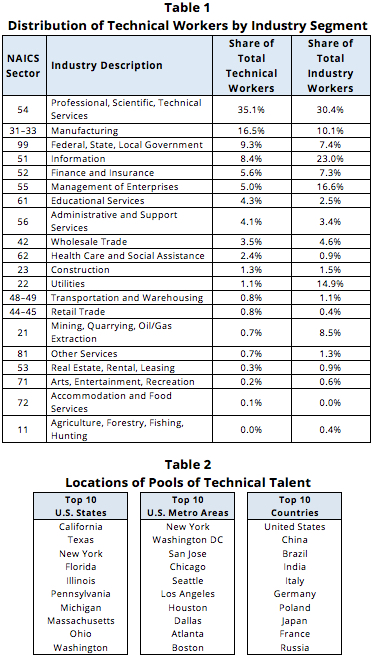Where Are All the Technical Workers?
- Many businesses in various industries and geographic areas lack candidates to fill open technical positions
- A shortage of IT, analytical, mathematical and engineering workers stifles many improvement and expansion plans
- Despite these challenges, technical workers are out there and their numbers are growing – businesses just need to know where to look
Many technical newspapers and journals that focus on IT, analytics, mathematics and engineering lament a shortage of technical talent being sought to fill the needs of businesses around the world. Others state that the shortage isn’t bad except in a few specialized areas. In fact, many technical workers are out there, and their numbers are growing much faster than workers with other skills. However, they’re getting hired as quickly as they’re minted – technical workers with decent skills are already employed. So, to find the people you need, you have to look in the right places.

In an increasingly data-driven world, all functional areas in your business – marketing, sales, product management, operations, finance – need programmers, analysts and other technical workers. Technical workers interpret key characteristics of markets, territories, buying behaviors, ratios and other business aspects. They develop insights that drive better decisionmaking.
A client recently asked me, “Where are all the technical workers?” To answer questions like this, I usually start with an Internet search to understand the topic and its issues, then quickly focus on detailed data that will provide more precise answers. In this case, I compiled data on employment by occupation delineated by industry and geographic area. I included workers at all levels in many occupations covering several categories such as IT, analytics, mathematics and engineering. I took a comprehensive view of all industries, states and metropolitan areas in the United States, then expanded the analysis to include estimates for the top 50 countries around the world.
The data indicates that a handful of industry segments employ over three-quarters of the technical workers. Some of those segments, and a few others, have very high concentrations of technical workers in their total labor forces (see Table 1). Note: The available data supports a deeper dive by industry, but a high-level view is included for the purposes of this blog post.
The data also indicates the geographic distribution of technical workers throughout the United States and around the world. Table 2 lists the top 10 U.S. states, the top 10 U.S. metropolitan areas and the top 10 countries as locations for the largest pools of technical talent. Forty-five percent of U.S. technical workers live and work in the top 10 states, and 30 percent of U.S. technical workers live and work in the top 10 metropolitan areas, and 67 percent of global technical workers live and work in the top 10 countries.
Many data-driven companies use data like this to focus their efforts – whether they’re looking for key analytics skills to enhance their workforce or trying to boost their pipeline opportunities and bookings by pursuing sales targets for technical products and services and planning a marketing campaign to target technically oriented personas or roles. SiriusDecisions helps clients draw insights from extensive internal and external databases through large-scale database integration, rigorous analytics, secondary market research, thought leadership, and an understanding of market estimation best practices gathered from our extensive research and client interactions.
Although looking for talent among your major competitors is tempting, keep in mind that some of the best potential candidates work in other industries and, possibly, other related fields. You may need to cast a wider net to find the skills you need to move forward quickly. Fortunately, SiriusDecisions’ consulting team can help. We can undertake the analysis to point you in the right direction. To learn more about how we use data to answer questions, please contact us.